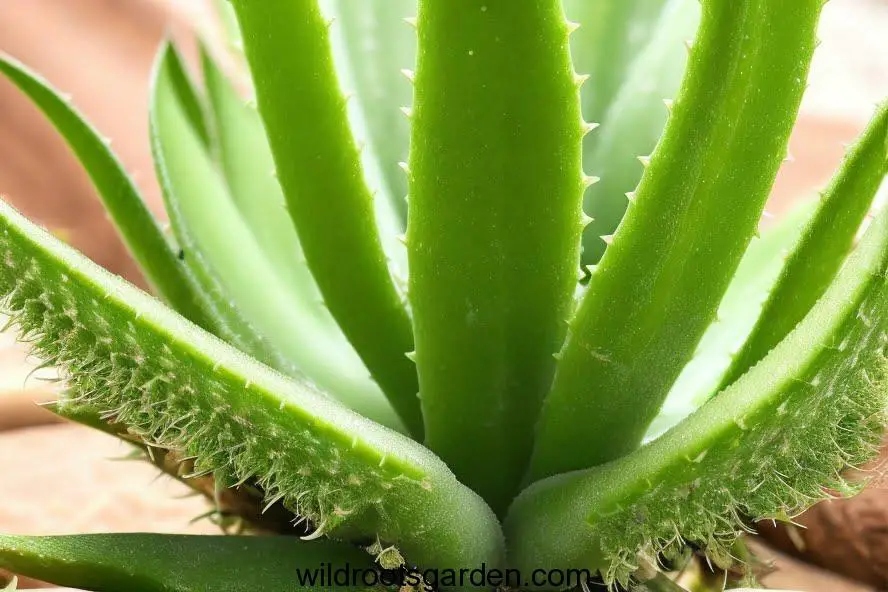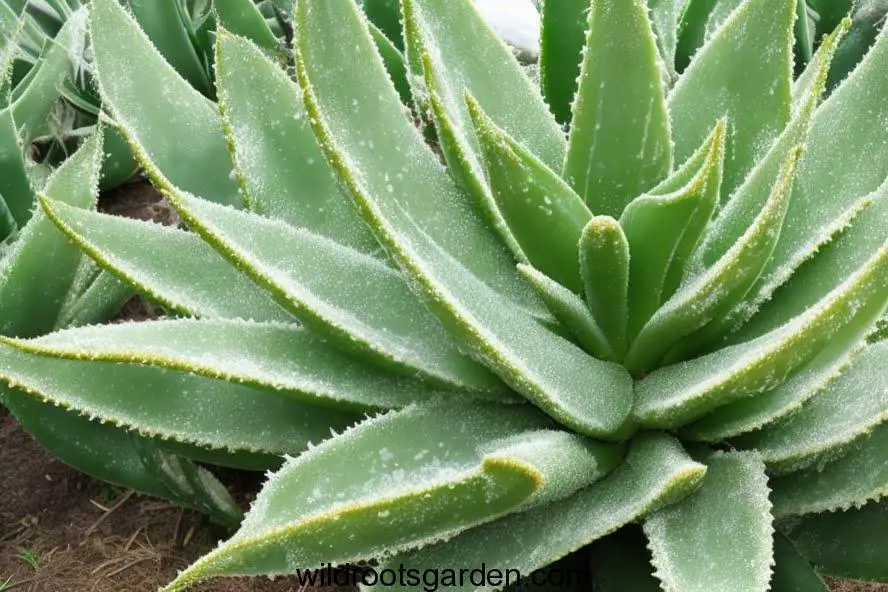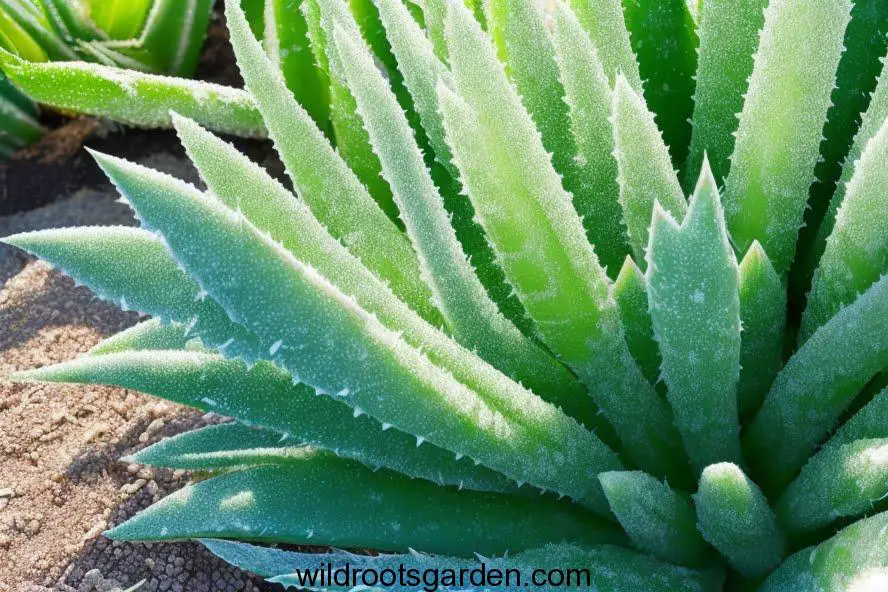Aloe Plant Froze Outside. Our cherished green friends, like the hardy aloe plant, can be seriously threatened by the sudden arrival of unexpected frost. Aloe plants are prized additions to many homes because of their reputation for healing abilities and low maintenance requirements. Nonetheless, this robust succulent may experience negative effects when exposed to freezing conditions, necessitating prompt care and attention.
In this enlightening manual, we delve into the crucial elements of an aloe plant’s reaction to freezing temperatures, illuminating the many harms it may sustain and the important actions necessary for recovery. We discuss the telltale indicators of frost damage, including as drooping, discoloration, and tissue damage, as well as practical solutions to bring the aloe back to life and restore it to its former splendor.
This thorough investigation provides you with the knowledge you need to protect your aloe plant from frost-related dangers and nurture it back to robust health, whether you are an experienced gardener or a beginning plant enthusiast. Take a journey with me to learn more about Aloe Plant Froze Outside: What You Need to Know.
JUMP TO TOPIC
- 1 Table of Contents
- 2 Understanding Aloe Vera Plant
- 3 Benefits of Aloe Vera
- 4 Ideal Growing Conditions
- 5 Aloe Plant and Freezing Temperatures
- 6 Effects of Freezing on Aloe Plant
- 7 Protecting Aloe Plants from Freezing
- 8 Moving Indoors
- 9 Covering the Plant
- 10 Providing Insulation
- 11 Signs of Frost Damage on Aloe Plant
- 12 Treating Frozen Aloe Plants
- 13 Removing Damaged Leaves
- 14 Promoting New Growth
- 15 Tips for Preventing Freezing Damage in the Future
- 16 FAQs
Table of Contents
Understanding Aloe Vera Plant

Benefits of Aloe Vera
Let’s briefly discuss the amazing advantages that the aloe plant provides before getting into how frigid conditions affect these plants. For millennia, people have used aloe vera gel to nourish the skin, heal wounds, and soothe burns. Aloe vera juice can also assist digestion, strengthen the immune system, and treat some inflammatory disorders.
Ideal Growing Conditions
It’s critical to provide your aloe plant with the ideal circumstances in order to ensure its healthy growth. Aloe vera flourishes in warm climates, with lots of sunlight, and well-draining soil. In mild to tropical areas, it is frequently grown as a houseplant or in outdoor gardens.
Aloe Plant and Freezing Temperatures
Effects of Freezing on Aloe Plant
Aloe vera plants can withstand some cold temperatures and are hardy, although they are not adapted to subfreezing temperatures. The water within a plant’s cells has the potential to freeze in the presence of subfreezing temperatures, causing permanent harm. Cell walls may be torn by the ice crystals, collapsing and becoming mushy as a result.
Protecting Aloe Plants from Freezing

Moving Indoors
Bringing your aloe plant indoors is one of the finest ways to shield it from frigid conditions. If you have aloe vera in a pot, move it to a warm, well-lit location in your house. Make sure the plant receives enough sunlight, or add grow lights to complement it. You can protect your aloe plant from the damaging effects of freezing weather by creating a proper indoor environment.
Covering the Plant
If relocating the plant indoors is not an option, you can protect it from frost with blankets. Before nightfall, when temperatures drop, cover the aloe plant with a blanket, old bedsheets, or a frost cloth. This additional insulation layer can help retain heat and avert freezing.
Providing Insulation
Adding a layer of mulch around the aloe plant’s base will act as additional insulation in addition to covering the plant. Mulch functions as an insulating layer, assisting in controlling soil temperature and shielding roots from extremely cold temperatures. Excellent mulching options include straw, chopped-up leaves, and bark chips.
Signs of Frost Damage on Aloe Plant
Aloe plants may still be harmed by frost if temperatures drop below freezing for an extended period of time, despite your best efforts. Aloe plant damage from ice can be seen as mushy or discolored leaves, blackened spots, and wilting. It’s critical to act quickly to rescue your aloe plant if you see these signs. Don’t panic.
Treating Frozen Aloe Plants

Removing Damaged Leaves
If there is no longer a risk of freezing weather, carefully check your aloe plant for any damaged leaves. Use clean, precise pruning shears to remove any leaves that are discolored or mushy. By doing this, you may divert the plant’s energy toward encouraging healthy growth and stopping rot from spreading.
Promoting New Growth
Provide your aloe plant with the best circumstances for growth to promote new growth. It should be placed in a warm, well-lit area, watered sparingly to prevent overwatering, and not fertilized until it begins to show signs of recovery. Your aloe plant should soon begin growing new leaves if you take good care of it and are patient.
Tips for Preventing Freezing Damage in the Future
The best defense against future freezing damage to your aloe plant is prevention. The following advice will help you protect your prized plant:
- Monitor weather forecasts and bring your aloe plant indoors when freezing temperatures are expected.
- If you have a large outdoor aloe garden, consider covering the entire area with a frost cloth or constructing a temporary greenhouse during winter.
- Plant aloe vera in containers that can be easily moved indoors during winter.
- Provide extra insulation around the root zone by using mulch or straw.
- Consider planting aloe vera varieties that are more tolerant of cold temperatures, such as Aloe aristata or Aloe radii.
***In conclusion, understanding the potential risks posed to your aloe plant by freezing temperatures is crucial to its overall well-being. The signs of frost damage, from wilting to discoloration, should never be taken lightly, and swift action is necessary to provide the best chance for recovery. Remember to resist the urge to prune damaged foliage immediately, as the aloe may still be capable of regenerating from seemingly lifeless parts.
You can protect your aloe from the elements and guarantee its continuous health by taking precautions like covering the plant during chilly nights or bringing it inside. As you meticulously restore the plant to health, patience, and care are essential. Make sure to give it enough warmth, sunlight, and well-drained soil.
With the information you’ve learned from this manual, you can protect your aloe plant against damage caused by frost and enjoy its year-round presence in your home. Giving your aloe the attention it requires will let you enjoy its calming effects and durable beauty for many years to come.
FAQs
Can I revive a completely frozen aloe plant?
fully frozen aloe plant is unlikely to come back to life because cell damage is typically irreversible. To develop fresh aloe plants, you can still try to save any healthy plant pieces and propagate them.
Should I water my aloe plant after it has frozen?
You should try to delay watering your aloe plant after it freezes. Prior to starting your usual watering schedule again, wait until the temperature rises above freezing and the plant begins to recuperate.
How often should I cover my aloe plant during freezing temperatures?
When freezing temperatures are predicted, you should cover your aloe plant every night. You should take the cover off during the day to let light and air in.
Can I leave my aloe plant outside during the winter?
It is not advised to leave your aloe plant outdoors throughout the winter if you reside in a region with subfreezing temperatures. To avoid frost damage, it is best to move it inside or provide it with the appropriate protection.
Can aloe plants survive multiple freeze events?
Aloe plants may endure brief periods of moderate freezing, but repeated freezing incidents can accumulate damage and ultimately kill the plant. With frigid weather, it’s crucial to take precautions and offer suitable protection.


